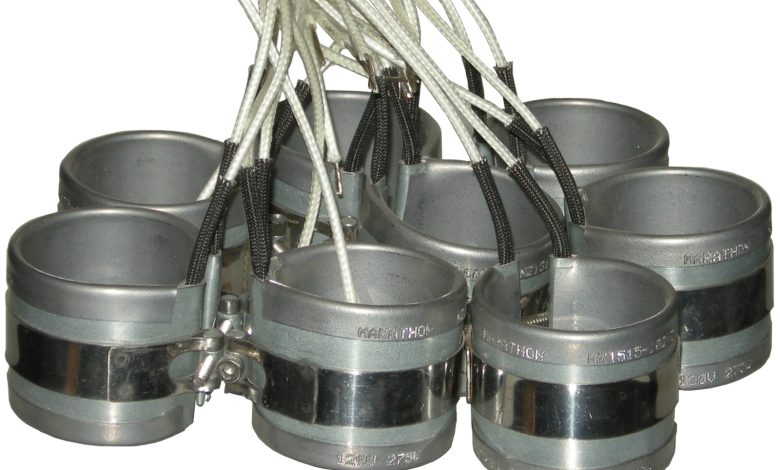Is It Easy To Detect Early Signs of Wear and Tear in Mica Band Heaters?

Mica band heaters work hard behind the scenes, keeping industrial machines running efficiently. But like any heating element, they don’t last forever. Catching signs of wear early can prevent unexpected failures and costly downtime. Knowing what to look for can make all the difference.
Visible Discoloration on the Outer Sheath That Signals Excessive Heat Stress Over Time
A change in color on the outer sheath of a mica band heater is often the first sign of trouble. While some discoloration is normal over time, excessive darkening, burn marks, or uneven color patches indicate prolonged exposure to extreme temperatures. This heat stress can weaken the metal sheath, making it more susceptible to cracks and reducing its ability to transfer heat effectively.
If left unchecked, a worn sheath can lead to insulation breakdown or even heater failure. Routine visual inspections can help spot these changes before they escalate. If a mica band looks significantly darker in certain areas or shows visible burn marks, it’s a sign that the heater may be working harder than it should, signaling an imbalance in heat distribution or insulation failure.
Loose or Corroded Terminal Connections That Lead to Inconsistent Performance
Electrical terminals on mica band heaters should remain tight and free from corrosion. Over time, thermal expansion and contraction can loosen connections, causing fluctuating performance or complete heater failure. Corroded terminals, on the other hand, create resistance, leading to overheating, inefficient energy transfer, and potential electrical hazards.
Loose connections may also result in intermittent heating, where the mica band heater cycles on and off unexpectedly. This can negatively impact process consistency, leading to uneven temperatures in the equipment it’s meant to heat. Regular maintenance checks should include tightening connections and cleaning any corrosion buildup to ensure steady and reliable heater performance.
Unusual Resistance Readings That Reveal Internal Wire Breakage Before Complete Failure
Electrical resistance measurements are a powerful diagnostic tool for detecting internal issues before a heater fails. Over time, the internal resistance of a mica band heater may shift due to wire degradation or breakage. A sudden increase in resistance suggests the heating element inside is weakening, while a drop in resistance may indicate a short circuit or an internal connection failure.
Routine testing with a multimeter can reveal these changes early. If resistance values start to deviate from the manufacturer’s specifications, it’s a warning that the heater is reaching the end of its lifespan. Identifying these issues early allows for timely replacements, reducing the risk of unexpected shutdowns or inefficient heating.
Uneven Heat Distribution That Suggests Insulation Breakdown Inside the Heater
A properly functioning mica band should distribute heat evenly across its entire surface. If some areas feel significantly hotter than others, it could indicate insulation degradation. When insulation inside the heater begins to break down, heat transfer becomes inconsistent, leading to overheating in some spots and insufficient heating in others.
This imbalance can cause stress on both the heater and the equipment it’s attached to. If temperature inconsistencies appear, testing the surface temperature with an infrared thermometer can confirm whether the heat is being distributed properly. Catching insulation failures early helps prevent damage to surrounding components and ensures the heater continues to operate efficiently.
Early-Stage Surface Cracks or Warping That Compromise Heat Transfer Efficiency
Physical changes in the structure of a mica band heater can impact its efficiency. Small cracks, dents, or warping in the metal sheath may seem minor, but they can disrupt heat transfer. Even a small deformity can create gaps between the heater and the surface it’s supposed to warm, reducing overall efficiency.
Inspecting mica bands for any warping or damage is essential, especially after extended use in high-temperature environments. Any irregularities in the heater’s shape or cracks forming along the sheath should be addressed immediately. A damaged heater may still function temporarily, but its long-term performance will decline, eventually leading to complete failure.
Increased Power Consumption Without Improved Heating Output as a Sign of Wear
If a heater is using more power than usual but not delivering the expected heat, it’s a sign that efficiency is declining. As mica band heaters wear out, they require more energy to maintain the same output, often due to internal resistance issues, poor insulation, or damaged heating elements. This not only increases operating costs but also places additional strain on the power supply.
A sudden spike in energy use should prompt a closer inspection of the heater. Comparing energy consumption over time can reveal subtle performance drops before they become major failures. Replacing an inefficient heater before it completely fails helps maintain process stability while keeping energy costs under control.




